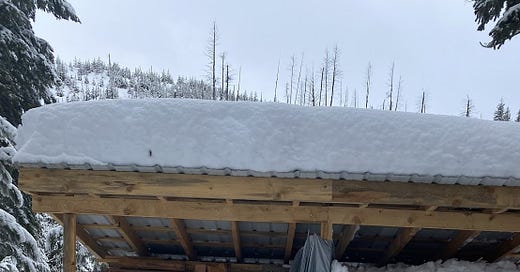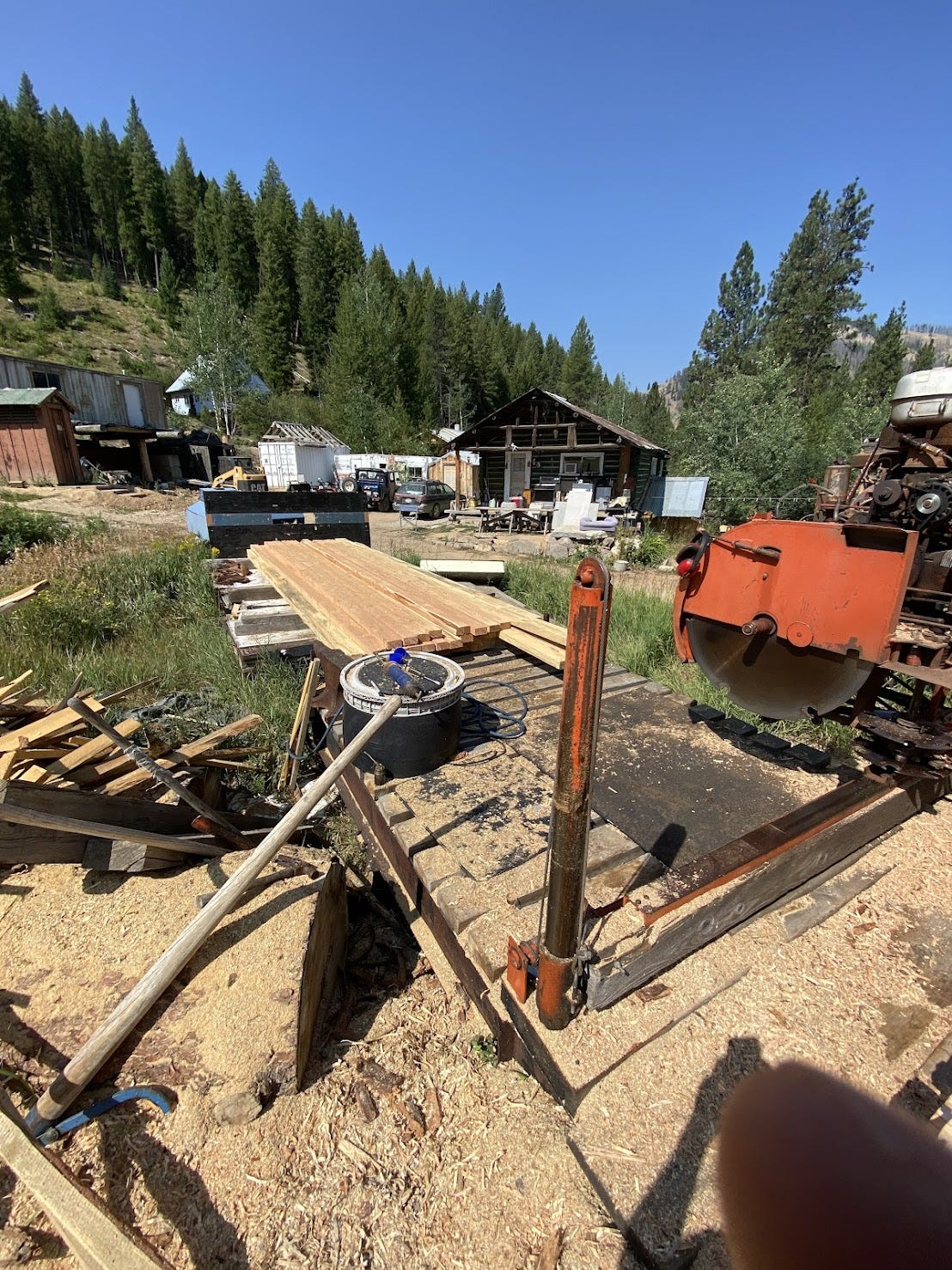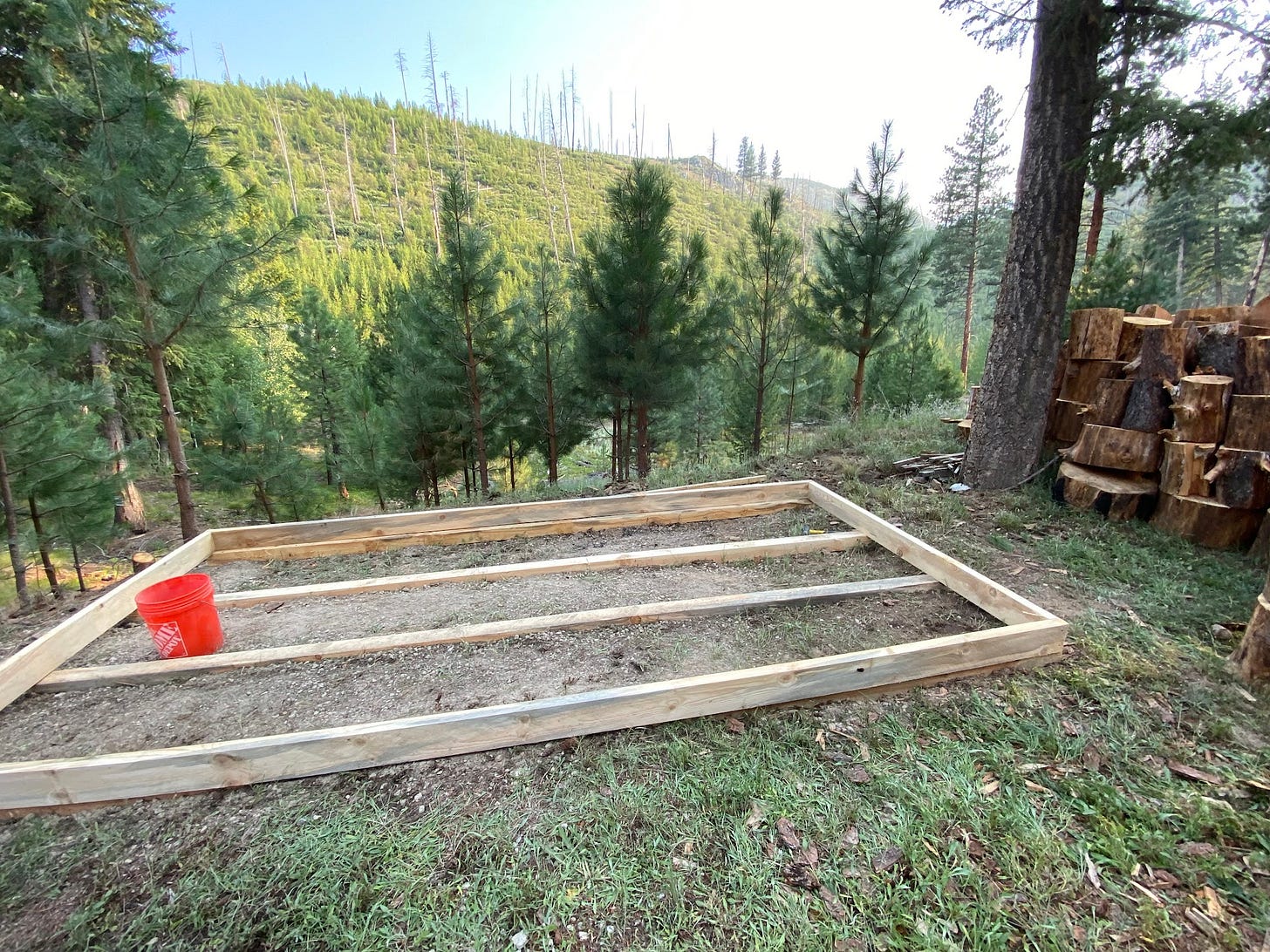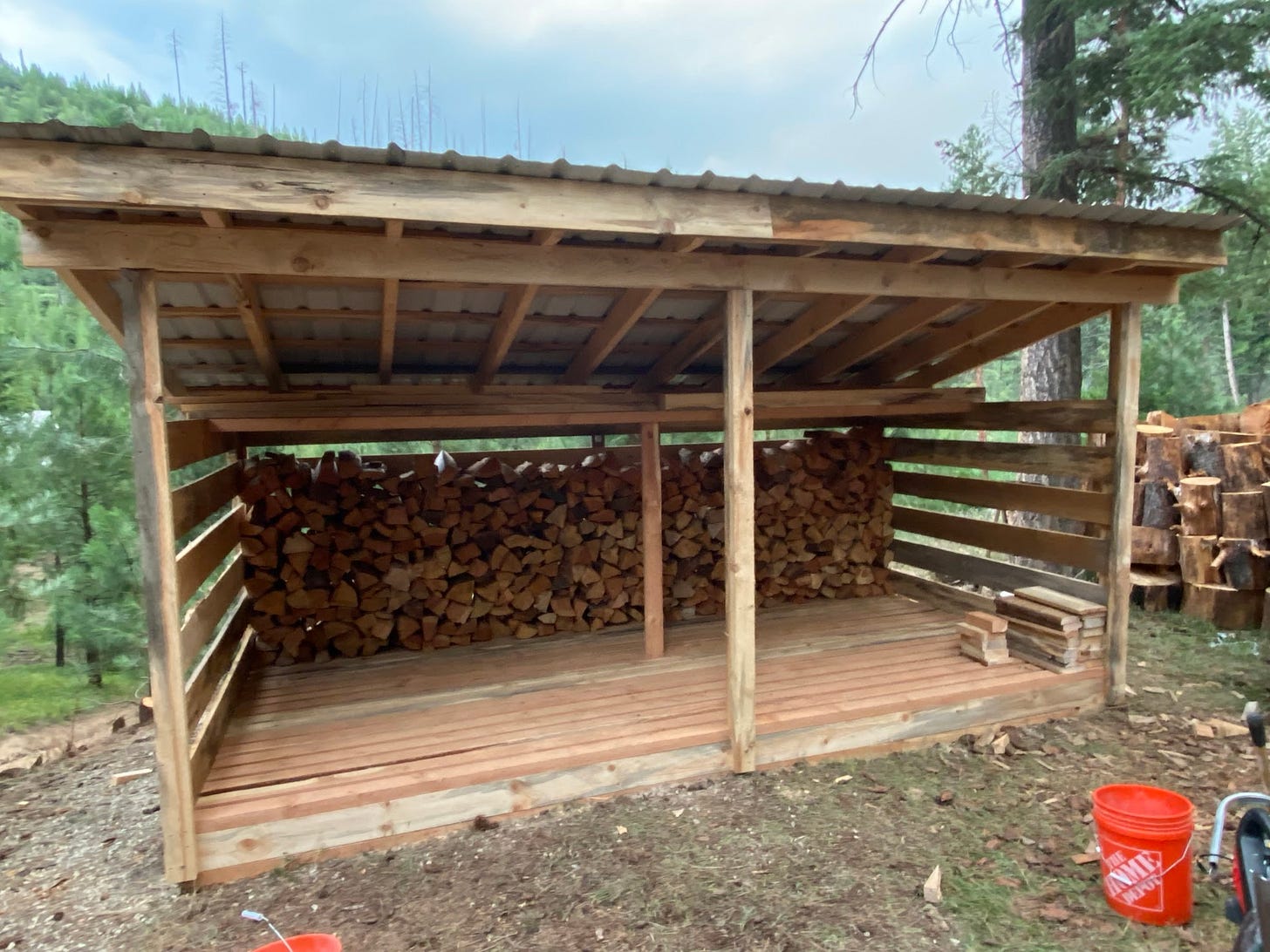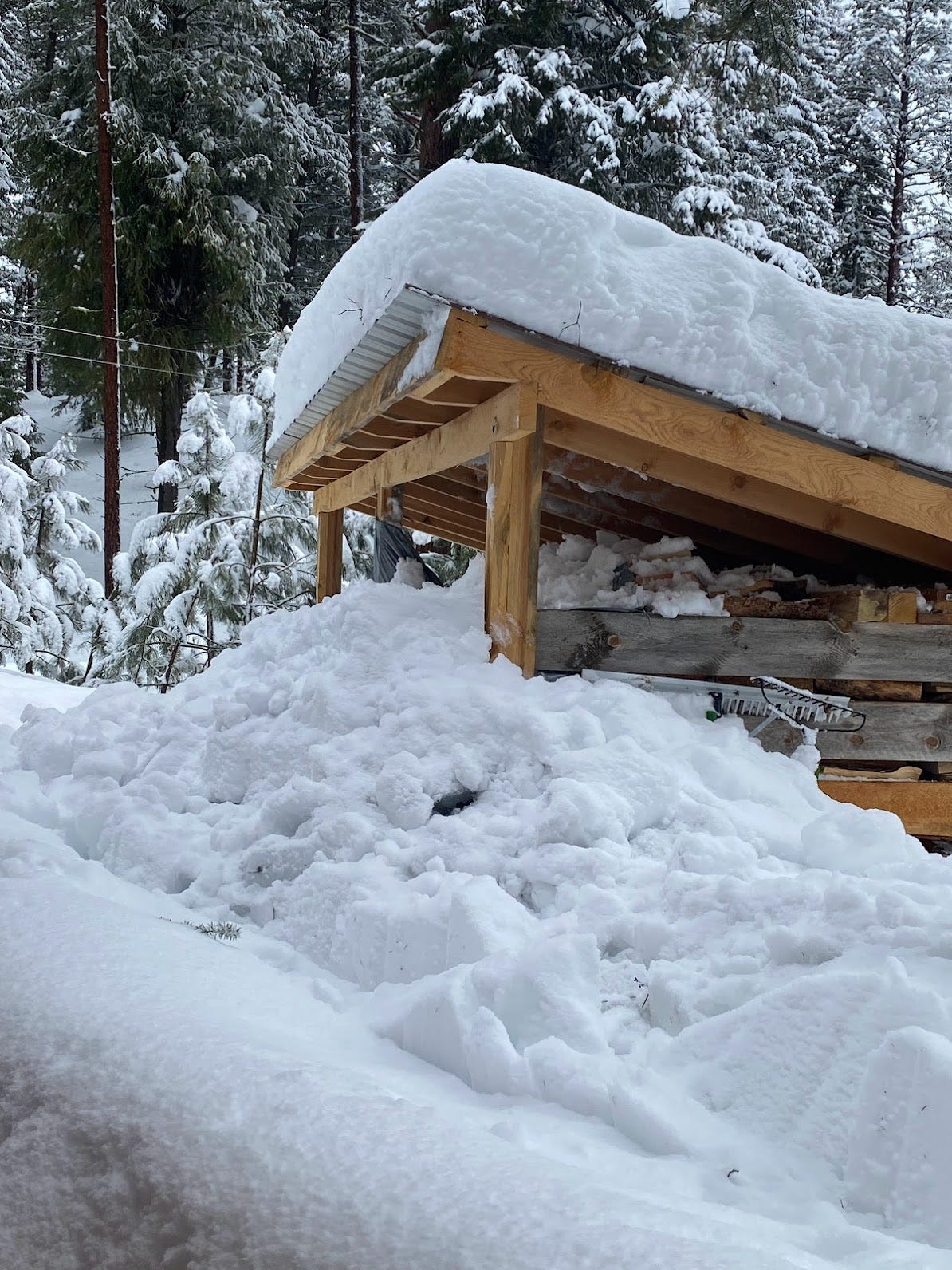In anticipation of our second winter living in the backcountry we had decided to build a woodshed which could hold up to six cords of firewood to help heat our home. I had envisioned a structure that would keep our wood dry and out of the elements and be a better option than what we had during our first winter, which were some tarps haphazardly thrown over our frustratingly moist logs.
To help build my shed, I employed the help of my father who came up from South Carolina. We spent several days building the heavy frame of the woodshed with locally hewn wood before finishing it off with a tin roof that would hopefully handle the winter snow load with no problem.
Satisfied with our summertime work, I then set about falling, cutting, and splitting wood during the short summer months until the shed was completely full and we felt ready for whatever winter may throw our way.
But that winter had different plans...
At first our structure was doing its job perfectly – protecting our valued heat source from the wet snow and allowing us easy access, but once winter started she never took her foot off the gas and we went from one foot of snow to over five in the span of a week.
On one of the mornings of our heaviest snowfall, I went to go fetch some logs for both of our wood burning stoves only to find that our wood shed was not visible. Considering it was still dark out, I grabbed a headlamp to try and shed some literal light on the situation which revealed a laughable scene.
The woodshed we had carefully engineered with a nine foot tall front was completely buried in snow and had moved almost a foot from its foundation. It turned out that snow had slid from our roof and the weight and velocity had so much force that snow was jammed between each and every log, three rows deep.
Without any other option, I changed my early morning work plans and grabbed a shovel. I dug for a few hours before sunlight came up and my nearest neighbor came to join me. Between shovels, a pickaxe, and a snowblower, we were able to clear a small entry to one portion of the shed to once again gain access to our precious fuel.
A seemingly benign design decision that we had made in the dryness of summer had cost us hours of unforeseen work in sub zero winter temperatures.
Consequences for actions.
